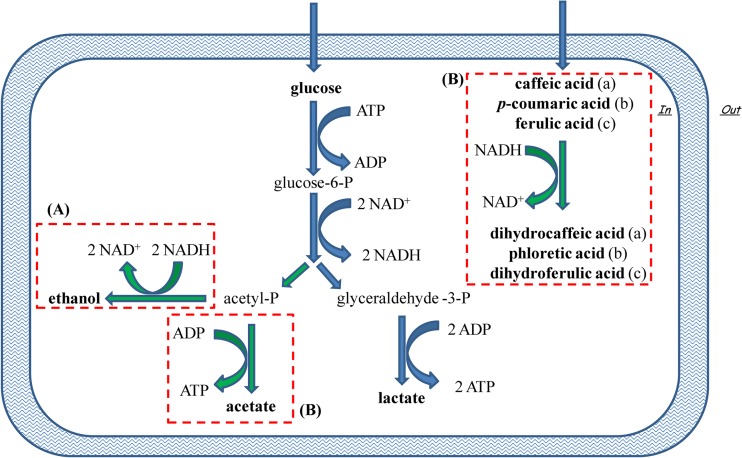FIG 3.
Schematic representation of the presumptive NAD+/NADH recycling mechanism adopted by strictly heterofermentative lactobacilli. Heterofermentative metabolism via the pentose-phosphate pathway generates 1 mol of ATP when acetyl phosphate (acetyl-P) is used as the electron acceptor to synthesize ethanol (A) or 2 mol of ATP in the presence of other electron acceptors (B), which enables additional ATP synthesis through the conversion of acetyl phosphate to acetate. Alternative electron acceptors suggested by this study are caffeic, p-coumaric, and ferulic acids, which may be reduced to dihydrocaffeic, phloretic, and dihydroferulic acids, respectively. glucose-6-P, glucose-6-phosphate; glyceraldehyde-3-P, glyceraldehyde-3-phosphate.

